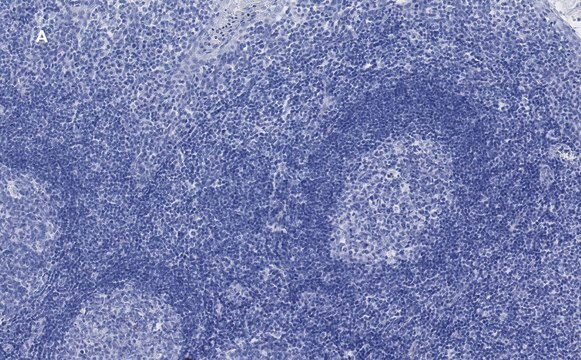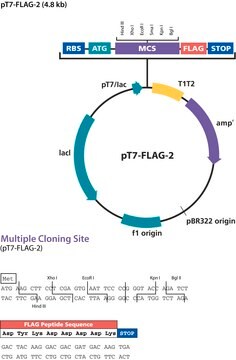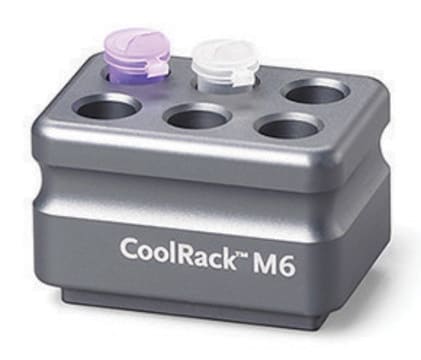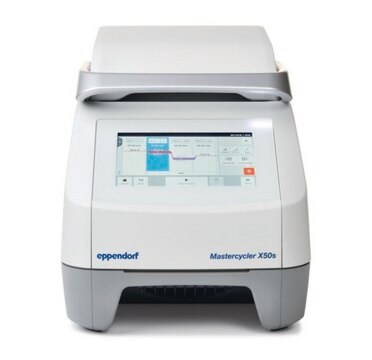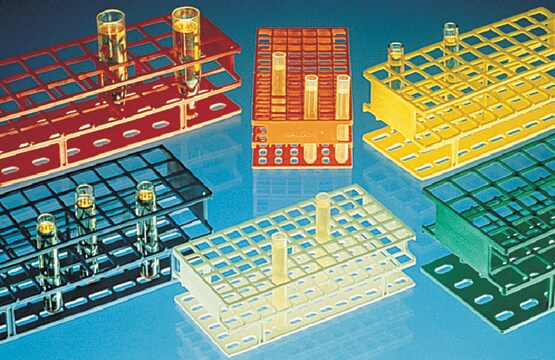OGS1913
PSF-TEF1-COOH-TEV-10HIS - C-TERMINAL 10HIS TAG YEAST PLASMID
plasmid vector for molecular cloning
Synonym(s):
cloning vector, expression vector, molecular cloning vector, plasmid, plasmid vector, snapfast vector, vector
About This Item
Recommended Products
tag
10-His tagged
form
buffered aqueous solution
mol wt
size 6768 bp
bacteria selection
kanamycin
Origin of replication
2Micron
pUC (500 copies)
Peptide cleavage
TEV
Peptide tag location
C-terminal
Promoter
Promoter name: TEF1
Promoter activity: constitutive
Promoter type: yeast
reporter gene
none
shipped in
ambient
storage temp.
−20°C
yeast selection
uracil
General description
About the Peptide Tag:This plasmid contains a c-terminal Deca-Histidine (10His) affinity tag that can be fused to a gene of interest to allow protein detection and/or purification. The sequence of the tag is: HHHHHHHHHH.
About the Cleavage Tag:This plasmid also encodes a protease cleavage site that is designed to be positioned between your gene of interest and the tag to allow the removal of the tag following protein purification or isolation. This plasmid contains a TEV cleavage tag. The protein sequence of the cleavage tag is: ENLYFQG. Cleavage occurs between the Glu and Gly residues. TEV is often reported to have better specificity for its recognition site compared to EKT Thrombin or Faxtor Xa.
Promoter Expression Level: This plasmid contains the Yeast Elongation Factor Alpha promoter (TEF1). This is the strongest of the yeast promoters that we sell. It is a constitutive promoter and requires no induction. If you are interested in weaker promoters levels than we also stock plasmids that contain the following promoters in order of decreasing strength TPI (strong), ADHI (medium), STE5 (weak). We also stock Galactose inducible promoter plasmids if inducible expression is required. Please contact us for further information.
Sequence
Analysis Note
related product
Storage Class Code
12 - Non Combustible Liquids
Flash Point(F)
Not applicable
Flash Point(C)
Not applicable
Certificates of Analysis (COA)
Search for Certificates of Analysis (COA) by entering the products Lot/Batch Number. Lot and Batch Numbers can be found on a product’s label following the words ‘Lot’ or ‘Batch’.
Already Own This Product?
Find documentation for the products that you have recently purchased in the Document Library.
Articles
Learn more about relevant restriction site functions in the SnapFast™ plasmid system. All DNA sections are pre-screened, and where possible modified, to remove any of the restriction sites found within the core SnapFast plasmids to maintain their flexibility.
A range of forward and reverse sequencing primers that allow you to sequence any insert that you make into a particular position within any plasmid. Where possible, the binding sites for each of these primers is conserved.
Our team of scientists has experience in all areas of research including Life Science, Material Science, Chemical Synthesis, Chromatography, Analytical and many others.
Contact Technical Service

